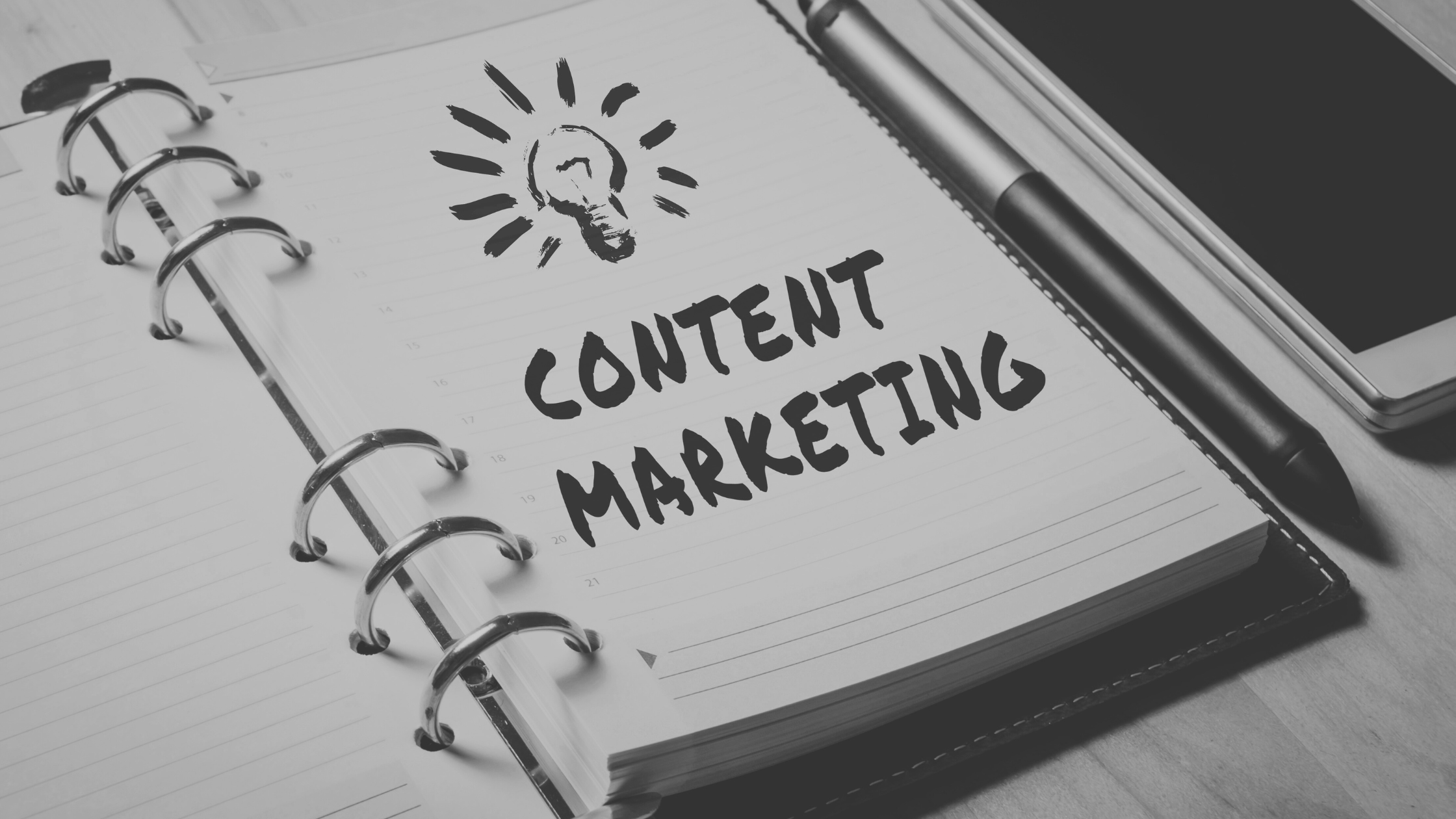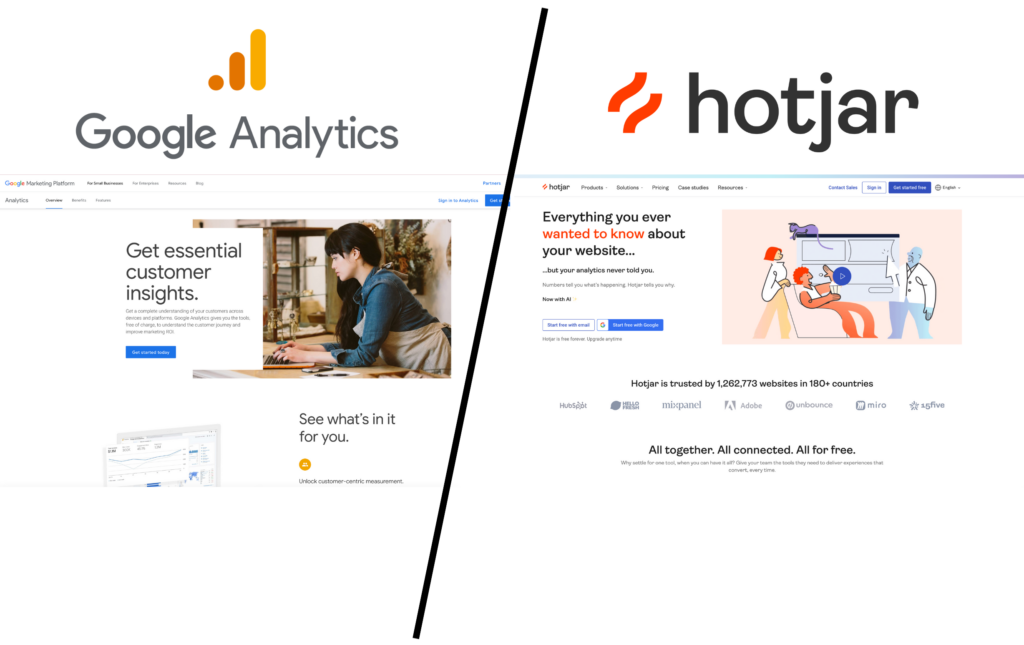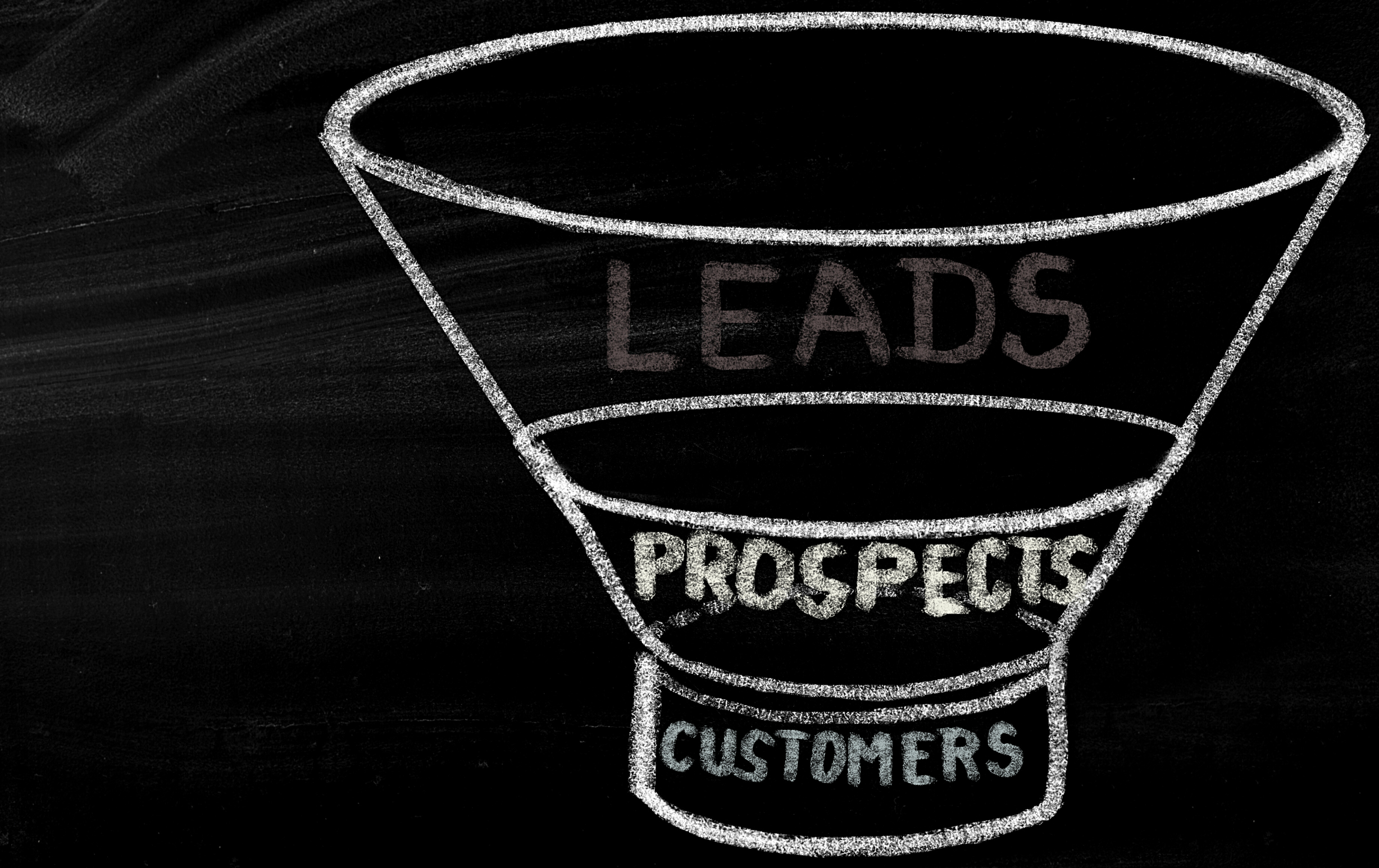When it comes to marketing your business, you may constantly seek effective ways to promote your products and services to a broader audience. Pay-per-click (PPC) advertising has emerged as a popular and powerful marketing tool allowing businesses to directly reach their target customers.
So many PPC platforms are available, each offering unique features and benefits. Therefore, it can take time to determine which one is the best fit for your business. In this article, we will explore the different types of PPC platforms and discuss their pros and cons, helping you make an informed decision that aligns with your marketing goals.
A PPC platform is an online advertising channel where businesses can display their ads to potential customers. Unlike Search Engine Optimization (SEO), which focuses on organic search results, PPC platforms offer paid placements for advertisements.
This allows your business to achieve immediate visibility and increase its chances of capturing the attention of its target audience. While SEO requires time and effort to climb the search engine rankings, PPC platforms can provide instant visibility for businesses. It’s important to weigh the pros and cons of both SEO and PPC to determine which strategy suits your specific needs.
As you search for a cheap PPC advertising platform that will render the best results, let’s explore some pay-per-click pros and cons. What are some of the types of PPC platforms to consider? Let’s take a look.
Search Ads
Search ads are the most common and recognizable type of PPC platform. They appear alongside search engine results, usually at the top or bottom of the page, marked as ads. These ads are typically text-based and are triggered by specific keywords that the user entered.
The click prices for search ads differ depending on how competitive the keyword is. Businesses often use search ads to target potential customers actively searching for their products or services.
Pros of Search Ads
- Immediate visibility to potential customers actively searching for relevant keywords.
- Highly targeted reach based on specific search queries.
- Greater control over ad copy, keywords, and budget allocation.
Cons of Search Ads
- High competition for popular keywords can lead to increased click prices.
- Limited ad space for text-based ads requires that you write engaging and concise copy to stand out.
- Ad fatigue may occur when users repeatedly see the same ads, potentially leading to lower click-through rates.
Display Ads
Display ads are visually appealing advertisements on websites, videos, and apps within a network of more than 2 million websites, videos, and apps. These ads can be static images, animated banners, or even interactive media.
Display ads target specific audiences based on demographics, interests, and browsing behavior, allowing businesses to reach potential customers beyond search engine results.
Pros of Display Ads
- Wide reach and exposure to a diverse audience across various websites and platforms.
- Effective for building brand awareness and creating visual impact with compelling graphics.
- Targeting options based on demographics, interests, and browsing behavior, leading to more relevant ad placements.
Cons of Display Ads
- Lower click-through rates compared to search ads due to their passive nature.
- Ad placements on particular websites or platforms may not align with the desired target audience.
- Difficulty measuring direct conversions, as display ads focus more on brand exposure.
Remarketing ads target users who have previously interacted with your website or app. These ads serve as reminders, appearing to those users as they browse other websites or use mobile apps within the ad network.
Remarketing ads help to re-engage potential customers who have shown interest in your business, increasing the chances of conversion.
- Increased conversion rates by re-engaging users who have already shown interest in your business.
- Personalized messaging based on users' previous interactions, enhancing relevancy.
- Cost-effective, as you are targeting a warm audience already familiar with your brand.
- It may appear intrusive to some users, who may perceive it as constant targeting.
- Limited reach compared to other PPC platforms, as it only targets users who have interacted with your website or app.
- Requires careful management to avoid overexposure and ad fatigue among potential customers.
Social media ads have gained significant popularity in recent years, allowing you to reach their target audience on platforms such as Facebook, Instagram, Twitter, and LinkedIn. These ads can include images, videos, carousels, and sponsored posts. Social media ads allow precise targeting based on the user’s demographics, interests, behaviors, and connections.
- Broad user base on popular social media platforms, providing extensive reach.
- Advanced targeting options to ensure ads are shown to the most relevant audience.
- Ability to engage with users through likes, comments, and shares, fostering brand interaction.
- Users may exhibit ad blindness due to the frequent presence of ads in their social media feeds.
- Ad performance can vary significantly across different social media platforms.
- Evolving algorithms and ad policies may require frequent adjustments to campaign strategies.
What Are the Benefits of Using PPC?
PPC (Pay-Per-Click) advertising offers numerous benefits for businesses seeking to increase their online visibility and drive targeted traffic to their websites. While both PPC and SEO (Search Engine Optimization) are essential components of a comprehensive digital marketing strategy, PPC provides distinct advantages that make it a valuable tool for businesses.
Let's explore the benefits of using PPC.
One of the primary advantages of PPC is its ability to provide instant visibility. With PPC, your ads can appear at the top of search engine results pages or on relevant websites within a short period.
On the other hand, SEO requires time to build organic rankings. Use SEO and PPC together to allow you to jump ahead and gain immediate exposure to potential customers while also building an ongoing organic presence.
PPC ads are particularly beneficial for new businesses or those launching new products or services, enabling them to generate leads and sales right from the start.
2. Targeted Reach
PPC platforms offer advanced targeting options for your business to reach specific audiences based on demographics, interests, location, and search intent. By selecting the right keywords and refining your targeting settings, you can ensure that your ads are shown to individuals more likely to be interested in your offerings.
This targeted approach helps maximize your ad spend by reaching the most relevant audience, increasing the chances of generating quality leads and conversions.
3. Control and Flexibility
PPC advertising gives you a high level of control and flexibility over your ad campaigns. You have the power to set your budget, determine the maximum amount you're willing to pay for clicks, and adjust your campaign settings based on real-time data and performance.
Choose PPC and optimize your campaigns continuously, allocate funds to high-performing keywords or ads, and make strategic decisions to maximize your return on investment (ROI).
4. Measurable Results
Unlike some traditional marketing methods, PPC offers measurable results. Each PPC platform provides comprehensive analytics and reporting tools that help you track various metrics, including impressions, clicks, click-through rates, conversions, and cost per conversion.
Use this data to calculate ROI, identify areas for improvement, and make data-driven decisions to optimize your advertising efforts continually. Whether you choose PPC outsourcing or track all of these metrics yourself, making changes according to the data will only increase your ROI.
5. Cost-Effective
PPC advertising is cost-effective because you only pay when someone clicks on your ad. This means you're investing your marketing budget in engagement and potential leads rather than paying for mere ad impressions. Additionally, you have the ability to set your maximum bid for clicks, ensuring that you stay within budget.
PPC vs. SEO: Which Provides More Value?
While both PPC and SEO are valuable components of a digital marketing strategy, it's important to understand that they serve different purposes and offer unique advantages. PPC provides immediate visibility, precise targeting, control over budget and campaigns, and measurable results. Conversely, SEO focuses on long-term organic rankings, building authority, and driving sustainable organic traffic.
Determining which provides more value depends on your business goals, timeline, and marketing budget. PPC can deliver the desired outcomes if you're looking for quick results, immediate visibility, and control over your campaigns. However, SEO plays a crucial role in establishing a strong online presence, building brand authority, and driving sustainable organic traffic over the long term. Remember, one article published two years ago could be your main source of conversions with a solid SEO strategy.
In the end, a well-rounded digital marketing strategy should include a combination of both PPC and SEO. By capitalizing on the benefits of each approach, you can maximize your online visibility, reach a broader audience, and achieve sustainable growth in the competitive digital landscape.
PPC (Pay-Per-Click) platforms have revolutionized how businesses advertise online, offering targeted exposure and measurable results. However, with various PPC platforms available, of course, you’re in search of the best advertising platform.
They each have unique features and benefits, so it can be challenging to determine which one is the best fit for your advertising needs. As you look for the top advertising platforms, consider the following options.
Google Ads
Google Ads is undoubtedly one of the most well-known and widely used PPC platforms. It allows businesses to display ads on Google's search engine results pages (SERPs) as well as on partner websites within the Google Display Network. Let's explore some pros and cons of Google Ads:
Google Ads provides various ad formats to cater to different advertising goals and preferences. These include text ads, image ads, video ads, responsive ads, and more. The flexibility of ad formats allows businesses to create visually appealing and engaging advertisements to capture their audience's attention.
Reach
One of the significant advantages of Google Ads is its massive reach. As the world's most popular search engine, Google handles billions of searches every day. This extensive user base allows businesses to target a vast audience actively seeking information, products, or services related to their offerings.
Bidding
Google Ads operates on a bidding system where advertisers compete for ad placements based on their bid amount and quality score. You can set a maximum bid of what you are willing to pay for each click or impression, and the ad auction determines the final placement. Depending on the campaign goals, bidding strategies can be adjusted to prioritize clicks, conversions, or impressions.
Pros and Cons of Google Ads
Some of the pros of using Google Ads include:
- Extensive reach and access to a large user base actively searching for relevant information.
- Diverse ad formats to cater to different advertising goals.
- Robust targeting options based on keywords, demographics, location, and more.
Take note – Google Ads also has a few drawbacks:
- High competition, particularly for popular keywords, can increase click prices.
- Continuous monitoring and optimization are necessary to maximize campaign performance.
- Ad blindness may occur due to user familiarity with ad placements on search engine results pages.
Google Ads is a great place to start your PPC ad campaign. You will only learn more every time you set a budget and calculate the success of the strategy.
Facebook Ads
Facebook Ads is one of the top advertising platforms that allows your business to reach its target audience within the Facebook and Instagram ecosystem. Facebook is visited by millions of users every day, multiple times a day. Don’t you want your brand to appear on that platform?
Let's explore some key aspects of Facebook Ads:
Facebook Ads offers a wide range of ad formats, including image, video, carousel, and collection ads. You have the creative freedom to showcase your products or services in visually appealing ways, capturing the attention of your audience as they scroll through their social media feeds. Choose an ad design that stands out from others that users may pass by.
Reach
With billions of active users, Facebook offers a massive and diverse audience for businesses to target. Advertisers can define their target audience based on demographics, interests, behaviors, and connections. This granular targeting allows businesses to deliver their ads to the most relevant users who are likely to be interested in their offerings.
Bidding
Facebook Ads operates on an auction-based bidding system, similar to Google Ads. You can set your bid amounts and budgets, and the platform determines the ad placements based on these bids and their relevance to the target audience.
Depending on campaign objectives, bidding strategies can be adjusted to optimize clicks, lowest cost, or highest value. Keep in mind that a PPC ad campaign is not set up and then left alone. Once you measure the results of your strategy, you can allocate your funds to other areas that are working.
Pros and Cons of Facebook Ads
Some of the pros of using Facebook Ads include the following:
- Extensive audience reach on Facebook, including specific demographic groups and niche interests.
- Visual and engaging ad formats that capture users' attention while browsing social media feeds.
- Detailed targeting options to ensure ads are shown to the most relevant users.
Facebook Ads also have a few cons:
- Ad performance can vary depending on the campaign objective, target audience, and ad creative.
- Users may exhibit ad fatigue due to the frequent presence of ads on their social media feeds.
- Keeping up with algorithm changes and ad policies is crucial for maintaining campaign effectiveness.
Consistency is key with Facebook advertising. But even then, you may benefit from PPC outsourcing and maximizing your results with the help of an expert.
Instagram Ads
Instagram, a popular social media platform owned by Facebook, provides your business with a powerful advertising opportunity through Instagram Ads. Of all the platforms for advertising, Instagram has a niche that can catapult your business to the next level if you execute the plan correctly.
Let's explore some key aspects of advertising on Instagram:
Instagram offers a variety of visually appealing ad formats to engage users within their feeds. These formats include photo ads, video ads, carousel ads, stories ads, and explore ads. Each design allows you to showcase your products or services in a visually engaging manner, capturing the attention of your target audience.
Reach
Instagram boasts a massive user base, particularly among younger demographics. Consider each platform and its overall demographic before choosing where to run PPC ads. Instagram attracts a wide range of users interested in various topics, from fashion and lifestyle to travel and food.
With Instagram Ads, you can precisely target your audience based on demographics, interests, behaviors, and even specific hashtags to ensure their ads reach the right people.
Bidding
Instagram Ads operates on an auction-based bidding system similar to Facebook Ads. Advertisers set their bid amounts and budgets, and the platform determines the ad placements based on these bids and their relevance to the target audience. Depending on the campaign goals, bidding strategies can be optimized for clicks, conversions, or impressions.
Pros and Cons of Instagram Ads
Some of the pros of using Instagram Ads include the following:
- Extensive reach among a younger and highly engaged audience.
- Visually appealing ad formats that allow businesses to showcase their products or services creatively.
- Integration with Facebook's advertising platform, providing access to advanced targeting and analytics.
However, there are a few cons to consider:
- Increased competition among advertisers, particularly in popular niches.
- The fast-paced nature of Instagram's feed can make it challenging for ads to stand out.
- Ad fatigue among users who frequently encounter sponsored content while scrolling.
Once you know about the pros and cons of Instagram ads, you can decide if it is the right PPC platform for your business. Consider the price per click, the possibility of targeting your ideal demographic, and the ad formats you would like to use before deciding on your platform of choice.
TikTok for Business
TikTok, a rapidly growing social media platform known for its short-form videos, has also introduced advertising options for businesses through TikTok for Business. Of all the PPC platforms, TikTok is attractive to younger users.
Let's explore what this advertising platform has to offer:
TikTok for Business provides various ad formats to capture users' attention within their video feed. These formats include in-feed ads, brand takeovers, hashtag challenges, and branded effects. Each format allows businesses to showcase their creativity and engage with the TikTok community through funny and entertaining content.
Reach
TikTok has gained significant popularity, particularly among younger generations. This platform attracts users who enjoy creating and consuming short videos on various topics, such as comedy, dance, fashion, and more.
With TikTok for Business, businesses can tap into this unique audience and target them based on demographics, interests, and user behavior. Your business can hop on a TikTok trend and spread brand awareness or introduce your product to a whole new audience.
Bidding
TikTok for Business operates on a bidding system similar to other PPC platforms. Advertisers set their bid amounts and budgets, and the platform determines the ad placements based on these bids and their relevance to the target audience. You can set a bid cap or cost cap or choose the lowest-cost advertising on TikTok for Business.
Pros and Cons of TikTok for Business
Some of the pros of using TikTok for Business include:
- Access to a rapidly growing and engaged user base, particularly among younger demographics.
- Creative ad formats that allow businesses to showcase their brand personality and connect with users through entertaining content.
- Opportunities for virality and organic reach through hashtag challenges and user-generated content.
There are a few cons to consider:
- The platform is still evolving, and advertising options may be limited compared to more established platforms.
- TikTok's user base is predominantly younger, so businesses targeting older demographics may need more reach through other platforms.
- Ad performance can vary depending on the quality and relevance of the content, as user engagement is crucial on this platform.
Find your place in TikTok for Business by running consistent ads and increasing user discovery of your brand.
YouTube Ads
YouTube, the world's largest video-sharing platform, offers you the opportunity to reach a massive audience through YouTube Ads. As users watch video after video, you can advertise your product and spread your brand awareness.
Let's explore the critical aspects of advertising on YouTube:
YouTube provides a range of ad formats to engage users during their video viewing experience. These formats include skippable in-stream ads, non-skippable in-stream ads, video discovery ads, and bumper ads. Each format offers unique ways to capture viewers' attention and deliver your message effectively.
Reach
With billions of monthly active users, YouTube offers a vast audience that spans various demographics and interests. Whether targeting a specific niche or aiming for broader exposure, YouTube's extensive user base allows you to reach your desired audience effectively. Maximize your ad spend by choosing YouTube to reach a whole new demographic of potential customers.
Bidding
YouTube Ads operate on a bidding system based on the cost-per-view (CPV) model. Advertisers set their maximum bid for each view, and the platform determines which ads to show based on bids, relevance, and user behavior. You can choose to maximize CPV or target cost per thousand impressions (CPM). Distribute your funds and calculate ROI, and then make changes where needed.
Pros and Cons of YouTube Ads
Some of the pros of using YouTube Ads include the following:
- Access to a massive and engaged user base that spends a significant amount of time watching videos.
- Diverse ad formats that allow businesses to tell their story and showcase products or services creatively.
- Detailed targeting options based on demographics, interests, and video content.
Consider the list of cons:
- Ad skipping is prevalent on YouTube, so creating compelling content within the first few seconds is crucial.
- The competition for ad placements can be high, particularly for popular niches.
- Ad viewability and completion rates can vary based on factors like video length and content relevance.
While YouTube advertising offers many benefits, you can set up a more successful campaign when you consider the downsides. How can you get your product out there without users clicking skip right away?
Pinterest Ads
Pinterest, a visual discovery platform, offers businesses the opportunity to showcase their products or services through Pinterest Ads. You can expand your PPC network by choosing Google or Facebook and also allocating money to Pinterest for more diverse outcomes.
Let's explore the key aspects of advertising on Pinterest:
Pinterest provides various ad formats to cater to different campaign goals and objectives. These formats include standard pins, carousel ads, promoted video pins, and shopping ads. Each format allows businesses to create visually appealing and engaging content that seamlessly integrates with users' browsing experience.
Reach
Pinterest attracts users who actively search for inspiration, ideas, and products. The platform is popular among individuals interested in home decor, fashion, DIY projects, recipes, and more. With Pinterest Ads, businesses can target users based on their interests, search behavior, demographics, and even specific keywords.
Bidding
Pinterest Ads operates on a bidding system based on the cost-per-click (CPC) model. Advertisers set their maximum bid for each click, and the platform determines which ads to display based on bids, relevance, and user intent. Depending on campaign objectives, bidding strategies can be optimized for clicks, impressions, or conversions.
Pros and Cons of Pinterest Ads
Some of the pros of using Pinterest Ads include the following:
- Access to a highly engaged and motivated audience actively seeking inspiration and products.
- Visual and appealing ad formats that align with the platform's aesthetics and user experience.
- Strong potential for driving traffic and conversions, particularly for businesses in niche markets.
However, there are a few cons to consider:
- Pinterest's user base may be more skewed toward specific demographics, such as women and individuals interested in lifestyle topics.
- Ad performance may vary based on the quality of visuals and relevance to users' interests.
- Limited targeting options compared to other platforms, as Pinterest primarily focuses on interests and search behavior.
If Pinterest attracts a demographic that would benefit your business, you can choose Pinterest ads for some of your PPC funds.
Twitter, a popular social media platform known for its real-time updates and concise messaging, offers businesses the opportunity to reach a targeted audience through Twitter Ads. You can use Twitter Ads to target the ideal audience to maximize conversions for your product or service.
Let's explore the key aspects of advertising on Twitter:
Twitter provides several ad formats to help businesses engage with users and effectively promote their products or services. These formats include promoted tweets, promoted accounts, promoted trends, and in-stream video ads. Each format offers unique ways to showcase your brand and connect with your target audience on the platform.
Reach
Twitter has a diverse user base, with millions of active users across various demographics and interests. Advertisers can target specific audiences based on demographics, interests, keywords, followers, and events or conversations. This allows businesses to reach their desired audience effectively and engage with users who are actively participating in relevant discussions.
Bidding
Twitter Ads operate on a bidding system based on the cost-per-engagement (CPE) model. Advertisers set their maximum bid for each engagement, such as clicks, retweets, likes, or video views. The platform then determines which ads to display based on bids, relevance, and user behavior. Depending on campaign objectives, bidding strategies can be optimized for engagement, video views, or app installs.
Pros and Cons of Twitter Ads
Some of the advantages of using Twitter Ads include the following:
- Access to a vast audience actively engaged in real-time conversations and trending topics.
- The ability to target specific audiences based on demographics, interests, and keywords.
- Various ad formats that allow businesses to promote their brand and content creatively.
Some downsides to Twitter Ads:
- Twitter's fast-paced nature may make it challenging for ads to stand out among the constant stream of content.
- Ad visibility and engagement can vary depending on the relevance and timing of the ad within users' feeds.
- Ad performance may depend on the industry and target audience, as Twitter's user base has specific demographics and interests.
Twitter can be one of many PPC channels that you use for your business. Twitter’s users are ready to engage with new ideas and products and will even advertise for you by sharing when they find something they really like.
Microsoft Ads
Microsoft Advertising, formerly known as Bing Ads, provides businesses with the opportunity to reach a significant audience beyond Google's search engine. Out of all the best platforms for advertising, Microsoft Ads offers unique benefits.
Let's explore the key aspects of advertising on Microsoft Ads:
Microsoft Ads offers various ad formats to engage users across its search network, including text ads, product ads, app ads, and responsive search ads. These formats allow businesses to effectively target users who are actively searching for information, products, or services.
Reach
Microsoft Ads provides access to a substantial audience that uses Bing as their preferred search engine. This audience includes individuals looking for information, making purchase decisions, and seeking specific services. Additionally, Microsoft Advertising partners with other search networks, such as Yahoo, AOL, and DuckDuckGo, expanding the reach of your ads.
Bidding
Microsoft Ads operates on a bidding system similar to other PPC platforms. Advertisers set their bids for clicks or conversions, and the platform determines the ad placements based on these bids, relevance, and user intent.
Pros and Cons of Microsoft Ads
Some of the pros of using Microsoft Ads:
- Access to a substantial audience with different search behavior and preferences than Google users.
- Potentially lower competition and cost per click compared to Google Ads, making it a cost-effective advertising option.
- Integration with other search networks, expanding the reach of your ads.
However, there are a few cons to consider:
- Smaller search market share compared to Google, which may result in lower overall search volume.
- Ad performance may vary depending on the industry and target audience, as user demographics and search behavior differ from Google.
- Limited ad formats and targeting options compared to Google Ads.
Stepping outside of Google could be the best thing you do for your business. Find unique consumers by using Microsoft Ads.
LinkedIn Ads
LinkedIn, the world's largest professional networking platform, is also one of the most popular PPC advertising platforms. LinkedIn offers businesses the opportunity to reach a targeted audience through LinkedIn Ads. While this may not be on your list of cheap PPC advertising networks, you have a chance to hone in on your ideal audience.
Let's explore the key aspects of advertising on LinkedIn:
LinkedIn provides several ad formats to help businesses connect with professionals and effectively promote their products or services. These formats include sponsored content, sponsored InMail, text ads, and dynamic ads. Each format offers unique ways to engage with the professional community and showcase your brand.
Reach
LinkedIn boasts a vast user base of professionals across various industries, making it an ideal platform to target a specific audience. Advertisers can narrow down their audience based on factors like job title, company size, industry, skills, etc. This allows businesses to reach decision-makers, influencers, and professionals actively engaged in their respective fields.
Bidding
LinkedIn Ads operates on a bidding system based on the cost-per-click (CPC) or cost-per-impression (CPM) model. Advertisers set their maximum bid for each click or impression, and the platform determines the ad placements based on bids, relevance, and user behavior. Bidding strategies can be optimized for maximum delivery or target cost.
Pros and Cons of LinkedIn Ads
Some of the pros of using LinkedIn Ads:
- Access to a highly professional and engaged audience actively seeking career-related information and opportunities.
- Precise targeting options based on job titles, industries, and professional attributes, allowing businesses to reach their ideal audience.
- Various ad formats that cater to different campaign objectives and provide opportunities for brand building and lead generation.
Consider the following downsides:
- Higher advertising costs compared to some other platforms, particularly for highly competitive industries or niche markets.
- Limited reach compared to social media platforms like Facebook or Twitter, as LinkedIn's user base focuses primarily on professionals.
- Ad performance may vary depending on the quality of ad content, relevance to the target audience, and campaign optimization.
Is LinkedIn right for your company’s PPC ad campaign? If you are ready to target a professional and engaging audience, you can look into LinkedIn ads.
Amazon Ads
Amazon Advertising offers you the opportunity to promote your products directly within the Amazon marketplace. With millions of users on Amazon every day, how can you reach them with your product or service?
Let's explore the key aspects of advertising on Amazon:
Amazon provides various ad formats to help businesses increase product visibility and drive sales. These formats include sponsored products, sponsored brands, and display ads. Sponsored products appear within search results and on product detail pages, sponsored brands feature customized creatives and appear in prominent placements, and display ads reach customers both on and off Amazon.
Reach
With millions of active shoppers on the Amazon platform, advertising on Amazon allows businesses to target a vast and highly engaged audience. Advertisers can target customers based on keywords, product categories, interests, and even specific ASINs (Amazon Standard Identification Numbers). This targeting capability ensures that your ads reach customers who are actively searching for or browsing related products.
Bidding
Amazon Ads operates on a bidding system based on the cost-per-click (CPC) model. Advertisers set their maximum bid for each click, and the platform determines which ads to display based on bids, relevance, and customer behavior.
Pros and Cons of Amazon Ads
Some of the pros of using Amazon Ads are:
- Access to a vast and active customer base that is ready to make purchasing decisions.
- Targeting options that allow businesses to reach customers at various stages of the buying journey.
- Opportunities for increased product visibility, brand recognition, and sales within the Amazon ecosystem.
However, there are a few cons to consider:
- Higher competition, especially in popular product categories, may lead to increased bidding costs.
- Limited ad formats and creative options compared to some other advertising platforms.
- Ad performance may depend on factors such as product quality, competitive pricing, and customer reviews.
Amazon advertising allows you to run ads on and off Amazon. You can enjoy the benefits of targeting your audience while they are in a position to spend money and shop.
Learn How to Maximize PPC Benefits with Loupe and Blade
Choosing the right PPC platform for your business requires careful consideration of your marketing objectives, target audience, and budget. Each type of PPC platform offers unique advantages and disadvantages.
Once you’ve researched each platform and matched it up with your target audience, you can reap the benefits of the platforms you choose. Loupe & Blade is here to guide you through your PPC investment, helping you to maximize your ROI.










